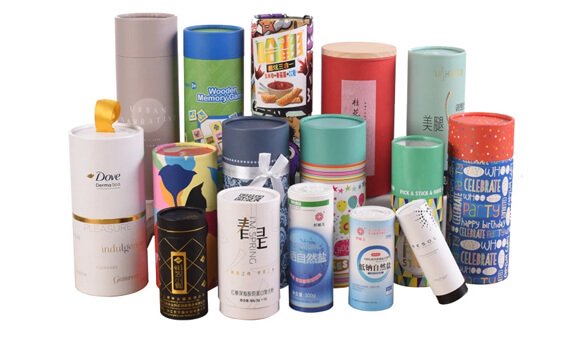Paper tube packaging represents a harmonious blend of tradition and modern innovation, offering versatile solutions that meet the evolving needs of today’s consumers and businesses. Originating from centuries-old practices, paper tubes have evolved to cater to contemporary demands for sustainability, customization, and functionality. This article explores how paper tube packaging bridges tradition with contemporary needs, focusing on features such as customizable paper tube inserts and applications like tube packaging for small electronics accessories.
The Heritage of Paper Tube Packaging
Historical Roots
Paper tubes have a rich history dating back to ancient civilizations, where they were used for storing scrolls, documents, and precious artifacts. Over time, the craftsmanship of paper tube production evolved, adapting to various cultural and industrial uses. Today, paper tube continues to honor its heritage while embracing modern manufacturing techniques and sustainable materials. This blend of tradition and innovation makes paper tubes a timeless choice for packaging solutions.
Eco-Friendly Advantages
In response to global environmental concerns, paper tubes have emerged as a sustainable alternative to traditional materials like plastic and metal. Made from renewable resources and often sourced from recycled paperboard, paper tubes are biodegradable and recyclable. This eco-friendly profile appeals to environmentally conscious consumers and businesses seeking to reduce their carbon footprint. By choosing paper tube packaging, brands can align with sustainability goals while meeting contemporary packaging demands.
Contemporary Applications and Versatility
Customizable Paper Tube Inserts
Customizable inserts enhance the functionality and versatility of paper tube packaging across various industries. These inserts can be tailored to securely hold and protect products, such as delicate small electronics accessories. Whether it’s foam padding, molded cardboard dividers, or custom-cut inserts, these solutions ensure that items remain intact during transit and storage. Tube packaging for small electronics accessories benefits greatly from these customizable inserts, providing both protection and organization within compact packaging.
Aesthetic Appeal and Branding
Beyond functionality, paper tube packaging offers ample opportunities for aesthetic customization and branding. Brands can utilize high-quality printing techniques to apply vibrant colors, intricate patterns, and branded logos on the cylindrical surface of paper tubes. This visual appeal not only attracts attention on retail shelves but also reinforces brand identity and product positioning. Customizable inserts further enhance branding efforts by offering a tailored presentation that reflects the brand’s attention to detail and commitment to quality.
Practical Benefits for Businesses
Cost-Effectiveness
Paper tube packaging offers practical benefits for businesses, including cost-effectiveness in production and logistics. The lightweight nature of paper tubes reduces shipping costs, while their stackable design optimizes storage space. Customizable inserts streamline packaging processes, reducing labor costs associated with assembly and ensuring efficient product presentation. These cost-effective advantages make paper tubes a preferred choice for businesses looking to maximize operational efficiency without compromising on quality.
Versatility Across Industries
The adaptability of paper tubes makes them suitable for a wide range of industries beyond traditional uses. From cosmetics and personal care products to gourmet foods and small electronics accessories, paper tubes can be customized to meet specific product requirements. Tube packaging for small electronics accessories exemplifies this versatility, offering compact and secure packaging solutions that protect delicate components while maintaining a sleek and professional appearance. This versatility allows brands to explore new markets and cater to diverse consumer preferences effectively.
Embracing Innovation and Sustainability
Sustainable Innovations
Innovation within paper tubes continues to drive advancements in sustainability and performance. Manufacturers are exploring eco-friendly materials, biodegradable coatings, and efficient production methods to enhance the environmental profile of paper tubes. Customizable inserts made from recyclable materials further contribute to sustainability efforts, ensuring that packaging components align with circular economy principles. By embracing sustainable innovations, brands can enhance their reputation as responsible stewards of the environment while meeting consumer expectations for eco-conscious packaging solutions.
Future Trends and Innovations
Looking ahead, the future of paper tube packaging is poised for continued growth and innovation. Advances in digital printing technology will enable more intricate designs and personalized packaging solutions. Smart packaging functionalities, such as RFID tracking and interactive features, could transform paper tube packaging into intelligent solutions that provide real-time product information and enhance consumer engagement. These innovations will further bridge tradition with contemporary needs, ensuring that paper tube packaging remains a relevant and preferred choice for businesses and consumers alike.
Conclusion
Paper tube exemplifies the timeless appeal of traditional craftsmanship combined with modern innovation and sustainability. From its historical roots to its versatile applications in various industries, paper tubes continue to evolve to meet contemporary packaging needs. Features such as customizable paper tube inserts and applications like tube packaging for small electronics accessories underscore the adaptability and functionality of paper tubes in today’s market. As brands increasingly prioritize sustainability and consumer engagement, paper tube packaging remains a valuable tool for delivering memorable product experiences while minimizing environmental impact. Embracing these qualities ensures that paper tube packaging will continue to bridge tradition with modern demands, driving innovation and sustainable growth in the packaging industry.

